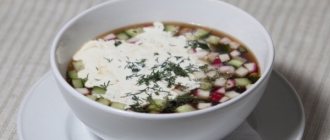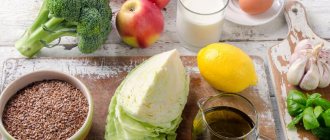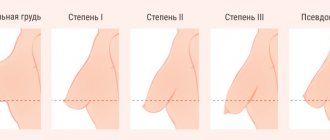The basis of the diet
Limiting fat consumption is the main rule on the basis of which Mikhail Ginzburg created the diet. The “ideal weight loss program” consists of changing your diet, and even without a significant increase in activity leads to gradual weight loss. It is designed for long-term use, therefore, despite limiting fats in the diet, they cannot be completely excluded, since without them a full exchange of elements in the body is impossible. Fats also help the absorption of many vitamins and control appetite.
Another prerequisite is to spend one or two fasting days every week. During these periods, you should not neglect nutrition completely, but switch to light vegetables, fruits and protein foods. However, this should be achieved gradually, observing certain rules on which Mikhail Moiseevich Ginzburg bases his methodology. Also, you cannot arrange more than two fasting days, since the body should not suffer from a lack of nutrition, vitamins and microelements.
Recommendations
The tips below are taken from Ginsburg's book, Down with Diets!
BJU ratio
The amount of protein foods and foods containing dietary fiber in the diet cannot be reduced. Ginsburg offers 6 ways to reduce fat in your diet:
- Eat more lean foods: replace meat with fish and milk, do not add fried foods to soups, give preference to boiled and stewed dishes rather than fried ones.
- Use less fatty products among analogues: take low-fat cottage cheese, not 9%, dumplings - without adding lard, light mayonnaise, etc.
- Reduce the fat content of the dish during its preparation: remove fatty layers from the meat, use a minimum amount of oil for frying, skim the foam from the surface of the broth.
- Gastronomic trick: reduce the fat content of the dish while eating it: cut off the fat from the meat, remove the skin from the chicken, do not put mayonnaise or sour cream in the soup.
- Hedonic technique: eat fatty foods as slowly as possible, prolonging the pleasure - this will ensure faster satiety, which means the size of the portion eaten will be minimal.
- Information technique: carefully read food labels at the stage of purchasing them and choose the least fat ones.
A clear example of how the second technique works as part of a pulse diet:
Cocktails
As part of the maintenance regimen, weight loss cocktails should be drunk 15 minutes before main meals and instead of lunch and afternoon snack (5 times in total). Moreover, Ginzburg does not insist on their mandatory use, leaving the right of choice to its users.
Fasting afternoons - know-how diets. Since the main process of spending fat reserves occurs during the day, you should fast until dinner. Before it you need to have time to drink about 4 servings of cocktail. But in the evening you can allow yourself some low-fat foods. If you really want to eat during the day, do not deny yourself vegetables (but no more than 800 g) and bread (3-4 pieces).
Scheme of the fasting regime of the day according to Ginzburg:
A serving of a cocktail is required 15 minutes before dinner - this will help reduce your appetite. Before going to bed, you can eat an apple or a bun.
Ginsburg recommends using Doctor Slim cocktails, but does not insist on this particular brand. He gives advice on how to choose the right and healthy drink that is suitable for his diet:
- Buy only in pharmacies.
- Per 100 g of dry mixture there should be a maximum of 10 g of fat.
- For 1 g of protein - no more than 1.5 g of carbohydrates.
- Don't chase expensive brands.
Other cocktails for weight loss: homemade / pharmacy.
Sport
Ginsburg says his diet does not involve intense training. He suggests replacing them with healthy walking, which:
- is not as stressful for the body as running;
- consumes energy released from broken down fat;
- uses most muscles;
- allows you to easily dose the temp.
As an alternative he suggests:
- cycling;
- skiing;
- aerobic exercise equipment;
- simple exercises that can be easily performed at home;
- walking up the stairs;
- Nordic walking;
- health running.
Possible meal schedule
Stages of nutritional change
To effectively and gradually reduce body weight, Mikhail Ginzburg in his methodology developed the following steps, following which will allow you to switch to proper nutrition without harm to the body:
- The first step is to study the theory.
- The second stage is the transition to a low-fat diet (duration from 1 month).
- The third step is normalizing sleep (full sleep is the best assistant in losing weight).
- A period of additional restrictions and active weight loss - the introduction of fasting days.
- Transition to a low-fat diet and normalization of body weight.
To lose weight safely, when going through these stages, you should not rush and quickly move on to the next period. The time for continuing each step is strictly individual, since the transition to the second stage is prohibited if the body is not yet accustomed to the nutrition at the first step, Mikhail Ginzburg points out in his book. The “ideal weight loss program” involves slow weight loss, only in this case it will not come back, and medicine all over the world is against accelerating fat burning. This is due to the fact that during emergency weight loss, the body experiences enormous stress, and after normalizing nutrition, it tries to make reserves. In this mode, uncontrolled weight gain occurs, even more than it was before losing weight. Therefore, it is very important to comply with all deadlines when moving to the next stage.
Menu
A sample menu for a week is ideal for stage II of the maintenance regimen.
The concept of a pulse diet existed before Mikhail Ginzburg. Before it, this system assumed nutrition according to the following scheme: 1 day to eat only zero-calorie foods, then 2-3 days to eat as usual, and again - a day with zero calories. The nutritionist identified the imperfections of such “swings” and proposed a more balanced and gentle method as an alternative.
We recommend:
- Ketone diet;
- Energy diet.
Sleep and additional stress
Mikhail Moiseevich Ginzburg identifies adequate sleep and physical activity as additional assistants in normalizing body weight. Well, with an active lifestyle it’s clear - the more calories we spend, the more effective weight loss. Although here, too, Mikhail Ginzburg emphasizes weight loss as health improvement, and excessive loads are in no way applicable to achieving your goals. During training, it is very important to monitor your well-being, breathing and pulse. The intensity of the load is chosen optimally if the pulse rate is within 110-120 beats per minute, breathing is free and even, and the body does not experience fatigue. A good indicator of a well-chosen workout is the ability to maintain a casual conversation while doing the exercises.
Scientists in the field of weight loss have conducted several studies on the effect of sleep on a person’s weight, and they have shown striking results - all other things being equal, the effect of weight loss and the absence of weight gain was most noticeable in individuals who had full and prolonged sleep. On the contrary, the absence of this condition led to overeating and decreased physical activity, and, as a result, weight gain.
Duration of ideal weight loss
The general course from the beginning of the transition to a low-fat diet, through a period of intensive weight loss and to normalization of body weight should be at least three months. In general, Mikhail Ginzburg does not highlight the concept of when to use an ideal diet, since each organism is individual, and the transitions between weight loss steps are very different for everyone. The main rule is that you cannot step over stages or shorten them if the body is not yet ready for this.
You can choose the right time to start the next step by carefully listening to your body - the nutrition of this stage is already becoming habitual, there is no desire to “break out”, and physical activity brings pleasure. If these parameters are met, it’s time to move on.
Approximate diet at stages
The low-fat step involves limiting the consumption of fatty meats, lard and oils. Preference is given to lean varieties of fish and meat. It is advisable to consume foods containing complex carbohydrates - cereals, pasta, and dairy products. Be sure to eat vegetables and fruits. This stage does not exclude sweets - however, it is best to use low-fat varieties - marshmallows, marmalade, marshmallows. Eating at least four times a day.
The active weight loss step involves additional restriction of carbohydrates, and sweets are completely excluded. The menu includes a mixture of low-fat cottage cheese and fruit, which must be consumed every day. The daily diet includes vegetables and fruits in their various forms, boiled meat, and fish.
The stage of introducing fasting days involves returning to a low-fat diet according to the first step, but with the introduction of fairly strict restrictions for two days a week. During these periods, you should consume a mixture of cottage cheese and fruits, raw vegetables and natural juices. You can drink tea or coffee (without sugar) in any quantity.
And most importantly, notes Mikhail Ginzburg, the body should not feel discomfort - performance is maintained, thoughts are clear, and the desire to normalize body weight does not disappear anywhere! To comply with these conditions, you need to set realistic goals for yourself, and understand that losing 10 kilograms in a month without harming your health is impossible, but gradually losing 3-4 kg of weight is an entirely achievable result.
What does "impulse" mean?
The author of this system is Doctor of Medical Sciences, famous Russian nutritionist Mikhail Ginzburg. She is certified as a cardiologist, endocrinologist, psychiatrist and psychotherapist. To this day, he continues to publish books dedicated to correcting excess weight and maintaining normal weight. Particularly popular is his practical guide “Down with Diets!”, in which he describes in detail what a pulse diet is.
Practical guide by Dr. M. Ginzburg “Down with diets!”
It is based on alternating 2 nutrition modes: maintenance and unloading. Their tasks are completely different, which ensures the emergence of impulses for intensive weight loss with its subsequent maintenance. The nutritionist himself compares such a system with a staircase leading down (to weight loss): you lost a couple of kilograms (went down a step) - you fixed yourself (stood on it for a while) - and so you need to go down until the numbers on the scales satisfy your ambitions.
Maintenance mode
Involves compliance with 10 “wonderful” rules (given below). Moreover, you cannot force yourself to adhere to them through force: this way of life must be accepted and loved, otherwise there will be no results.
Unloading mode
You can move on to it only after you have fully mastered the supporting one. The goal is to minimize daily calorie intake without suffering or discomfort. Ginsburg suggests using dietary modifiers for this - weight loss cocktails. In his book, such a one-day fast is called a “fasting midday”, since dinner is not excluded.
10 “wonderful” rules
Ten rules that Ginsburg called “wonderful”, as they allow you to make food less fatty and high in calories while fully maintaining satiety and taste. These are the basic principles of his diet.
- Reduce the fat content of products as much as possible (methods are described in the “Recommendations” section).
- Reduce your consumption of sweets.
- Do not give up your favorite treats (cakes, sweets, chocolate, chips, etc.), but eat them after dinner, on a full stomach, stretching out the pleasure - this way the amount of food eaten will be minimal.
- Make multi-component dishes: put on a plate a small piece of chicken, a spoonful of buckwheat, chopped half of a baked potato, a little lecho and green peas, sliced vegetables on Iceberg leaves. According to Ginsburg, this restaurant approach to food will make meals more nutritious.
- Tasting dishes - trying every slice and enjoying the taste.
- Make meals frequent (up to 8 times a day).
- Reduce portion sizes.
- Increase your consumption of foods containing dietary fiber.
- Follow the pre-meal rule: 15 minutes before the main meal, eat something (a slice of bread, a slice of apple, a plum) to curb your appetite.
- Reduce alcohol consumption.
Ginzburg addressed his diet to the following categories of the population:
- children and teenagers;
- pregnant women;
- nursing mothers;
- office workers leading a sedentary lifestyle;
- for those who are actively involved in fitness.
Since the pulse diet offers a balanced diet and gradual weight loss, it has virtually no contraindications. Diabetics (sweets are not prohibited) and people with kidney failure (on fasting days the condition may worsen) need to be careful.
Before losing weight, it is recommended to consult a doctor. Or write to M. M. Ginzburg himself, whose contacts are on many sites.
Who can use the pulse diet?
Since Mikhail Ginzburg’s diet does not provide for strict dietary restrictions, losing weight with this technique is accessible to a very wide range of people. Thus, pregnancy and breastfeeding are not contraindications to its use. Gentle weight loss methods and a diet that fully covers the body’s nutritional needs will only improve the well-being and sleep of these categories of women.
However, despite all the advantages of this method of losing weight, it is undesirable to start eating according to this method for people suffering from diseases of the gastrointestinal tract or having food allergies without consulting with specialists. Therefore, when starting to lose weight using this method, you need to consult a therapist and nutritionist.
Authorized Products
The impulse diet of Mikhail Ginzburg includes in the diet:
- Bran/grain bread or crackers.
- Lean red meat (beef/veal), rabbit or poultry.
- Chicken/vegetable broth soups with the addition of whole grains, potatoes and other vegetables.
- Sea/river fish (pink salmon, herring, pike perch, cod, pike, carp, hake), seafood (squid, mussels, shrimp), seaweed.
- Porridge, mainly from whole grains (buckwheat, oatmeal, millet), brown rice, pasta made from bran flour, egg whites.
- Fermented milk products whose fat content does not exceed 1% or are completely fat-free.
- Cold-pressed vegetable oil (olive) - 2 dessert spoons per day.
- Vegetables in raw form and vegetable-based dishes (salads/vinaigrettes), seasoned with lemon juice or vegetable oil.
- Fruits, various nuts and seeds.
- Sweets include marmalade, marshmallows, honey, marshmallows, brown sugar (up to 30 g per day).
- Fruit and berry juices, preferably with pulp (tomato, plum, apple, pomegranate), green and herbal tea without sugar, rose hip decoction, still mineral water.
Table of permitted products
| Proteins, g | Fats, g | Carbohydrates, g | Calories, kcal | |
Vegetables and greens | ||||
| greenery | 2,6 | 0,4 | 5,2 | 36 |
| squash caviar | 1,2 | 7,0 | 7,4 | 97 |
| zucchini | 0,6 | 0,3 | 4,6 | 24 |
| broccoli | 3,0 | 0,4 | 5,2 | 28 |
| cauliflower | 2,5 | 0,3 | 5,4 | 30 |
| carrot | 1,3 | 0,1 | 6,9 | 32 |
| cucumbers | 0,8 | 0,1 | 2,8 | 15 |
| beet | 1,5 | 0,1 | 8,8 | 40 |
| soybeans | 34,9 | 17,3 | 17,3 | 381 |
| tomatoes | 0,6 | 0,2 | 4,2 | 20 |
Fruits | ||||
| apricots | 0,9 | 0,1 | 10,8 | 41 |
| oranges | 0,9 | 0,2 | 8,1 | 36 |
| watermelon | 0,6 | 0,1 | 5,8 | 25 |
| cherry | 0,8 | 0,5 | 11,3 | 52 |
| grapefruit | 0,7 | 0,2 | 6,5 | 29 |
| pears | 0,4 | 0,3 | 10,9 | 42 |
| lemons | 0,9 | 0,1 | 3,0 | 16 |
| tangerines | 0,8 | 0,2 | 7,5 | 33 |
| nectarine | 0,9 | 0,2 | 11,8 | 48 |
| peaches | 0,9 | 0,1 | 11,3 | 46 |
| pomelo | 0,6 | 0,2 | 6,7 | 32 |
| plums | 0,8 | 0,3 | 9,6 | 42 |
| feijoa | 1,0 | 1,0 | 11,0 | 49 |
| cherries | 1,1 | 0,4 | 11,5 | 50 |
| baked sweet and sour apples | 0,5 | 0,5 | 12,3 | 59 |
Berries | ||||
| strawberries | 0,8 | 0,4 | 7,5 | 41 |
| strawberry | 0,8 | 0,4 | 7,5 | 41 |
| gooseberry | 0,7 | 0,2 | 12,0 | 43 |
| raspberries | 0,8 | 0,5 | 8,3 | 46 |
| currant | 1,0 | 0,4 | 7,5 | 43 |
Mushrooms | ||||
| mushrooms | 3,5 | 2,0 | 2,5 | 30 |
Cereals and porridges | ||||
| buckwheat | 4,5 | 2,3 | 25,0 | 132 |
| oatmeal with water | 3,0 | 1,7 | 15,0 | 88 |
| wheat bran | 15,1 | 3,8 | 53,6 | 296 |
| rye bran | 11,2 | 3,2 | 32,0 | 221 |
Bakery products | ||||
| whole grain bread | 10,1 | 2,3 | 57,1 | 295 |
Dairy | ||||
| skim milk | 2,0 | 0,1 | 4,8 | 31 |
| kefir product bio balance 0% | 3,2 | 0,1 | 4,5 | 32 |
Cheeses and cottage cheese | ||||
| cottage cheese 0% (low fat) | 16,5 | 0,0 | 1,3 | 71 |
Meat products | ||||
| lean beef | 22,2 | 7,1 | 0,0 | 158 |
| rabbit | 21,0 | 8,0 | 0,0 | 156 |
Bird | ||||
| boiled chicken breast | 29,8 | 1,8 | 0,5 | 137 |
| boiled chicken drumstick | 27,0 | 5,6 | 0,0 | 158 |
| boiled chicken fillet | 30,4 | 3,5 | 0,0 | 153 |
| boiled turkey fillet | 25,0 | 1,0 | — | 130 |
Eggs | ||||
| hard-boiled chicken eggs | 12,9 | 11,6 | 0,8 | 160 |
Fish and seafood | ||||
| boiled fish | 17,3 | 5,0 | 0,0 | 116 |
| pink salmon | 20,5 | 6,5 | 0,0 | 142 |
| squid | 21,2 | 2,8 | 2,0 | 122 |
| shrimps | 22,0 | 1,0 | 0,0 | 97 |
| salmon | 19,8 | 6,3 | 0,0 | 142 |
| mussels | 9,1 | 1,5 | 0,0 | 50 |
| herring | 16,3 | 10,7 | — | 161 |
| zander | 19,2 | 0,7 | — | 84 |
| cod | 17,7 | 0,7 | — | 78 |
| trout | 19,2 | 2,1 | — | 97 |
| pike | 18,4 | 0,8 | — | 82 |
Oils and fats | ||||
| vegetable oil | 0,0 | 99,0 | 0,0 | 899 |
| linseed oil | 0,0 | 99,8 | 0,0 | 898 |
Non-alcoholic drinks | ||||
| mineral water | 0,0 | 0,0 | 0,0 | — |
| green tea | 0,0 | 0,0 | 0,0 | — |
| black tea | 20,0 | 5,1 | 6,9 | 152 |
Juices and compotes | ||||
| tomato juice | 1,1 | 0,2 | 3,8 | 21 |
| rose hip juice | 0,1 | 0,0 | 17,6 | 70 |
| * data is per 100 g of product | ||||











